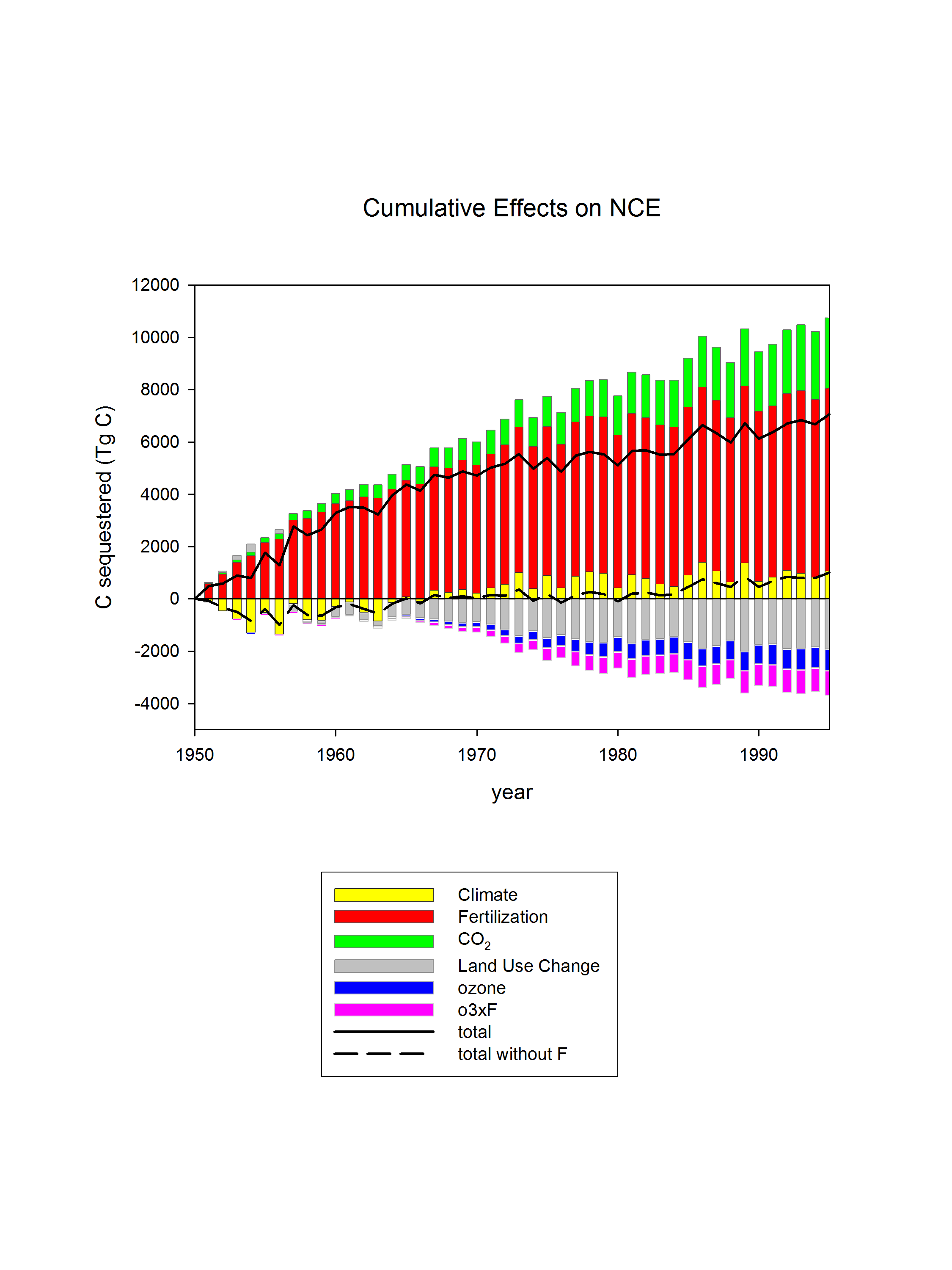I have been looking at the effects of ozone pollution on vegetation productivity and carbon sequestration. Ground-level ozone has been observed to inhibit photosynthesis by direct cellular damage. I have incorporated the empirical approach of Ollinger et al. (1997) and Reich (1987) derived for deciduous and coniferous trees and crops to the TEM model. This method inversely relates gross primary productivity (GPP) to accumulated hourly ozone levels. The ozone values are based on the AOT40 index, which is a measure of hourly-accumulated ozone above a threshold of 40 ppb. In order to apply the equation to TEM, I have developed a gridded map of AOT40 for the U.S. developed from the EPA CASTNET and AIRS datasets, and a globally, gridded map of AOT40 values based on the MIT Integrated Global System Model (IGSM) and MATCH models. Results for the U.S. observed dataset are published in Tellus while the global economic implications of future ozone pollution are published in Climatic Change. A review that accounts for the effects of increasing nitrogen deposition with increasing ozone is published in Comptes rendus Geoscience.
Figure 1: a) Location of CASTNET (filled circles) and AIRS (asterices) sites containing hourly ozone data for the U.S., b) Mean of AOT40 (ppb-hr) based on the 0.5°x0.5° interpolation of the CASTNET and AIRS data for 1998-2000 during June-July-August.

 ,
, 

 ,
, 